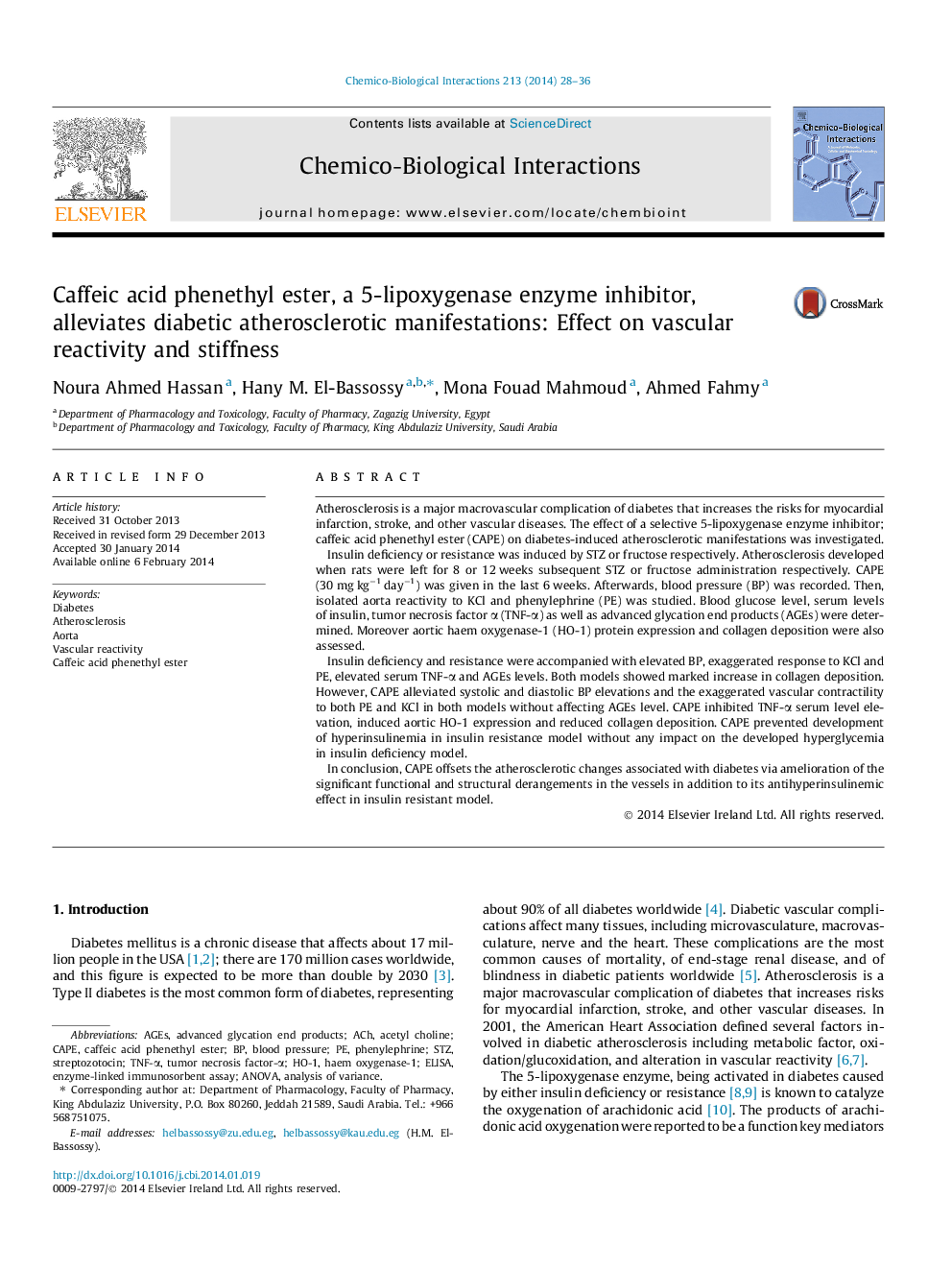| Article ID | Journal | Published Year | Pages | File Type |
|---|---|---|---|---|
| 2580522 | Chemico-Biological Interactions | 2014 | 9 Pages |
•It is the first to report on protective effect of CAPE on diabetic vascular toxicity.•CAPE virtually abolished the diabetes-induced atherosclerotic manifestations.•This suggests CAPE as a protective ingredient against diabetic vascular toxicity.
Atherosclerosis is a major macrovascular complication of diabetes that increases the risks for myocardial infarction, stroke, and other vascular diseases. The effect of a selective 5-lipoxygenase enzyme inhibitor; caffeic acid phenethyl ester (CAPE) on diabetes-induced atherosclerotic manifestations was investigated.Insulin deficiency or resistance was induced by STZ or fructose respectively. Atherosclerosis developed when rats were left for 8 or 12 weeks subsequent STZ or fructose administration respectively. CAPE (30 mg kg−1 day−1) was given in the last 6 weeks. Afterwards, blood pressure (BP) was recorded. Then, isolated aorta reactivity to KCl and phenylephrine (PE) was studied. Blood glucose level, serum levels of insulin, tumor necrosis factor α (TNF-α) as well as advanced glycation end products (AGEs) were determined. Moreover aortic haem oxygenase-1 (HO-1) protein expression and collagen deposition were also assessed.Insulin deficiency and resistance were accompanied with elevated BP, exaggerated response to KCl and PE, elevated serum TNF-α and AGEs levels. Both models showed marked increase in collagen deposition. However, CAPE alleviated systolic and diastolic BP elevations and the exaggerated vascular contractility to both PE and KCl in both models without affecting AGEs level. CAPE inhibited TNF-α serum level elevation, induced aortic HO-1 expression and reduced collagen deposition. CAPE prevented development of hyperinsulinemia in insulin resistance model without any impact on the developed hyperglycemia in insulin deficiency model.In conclusion, CAPE offsets the atherosclerotic changes associated with diabetes via amelioration of the significant functional and structural derangements in the vessels in addition to its antihyperinsulinemic effect in insulin resistant model.
